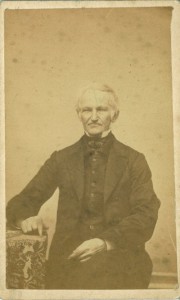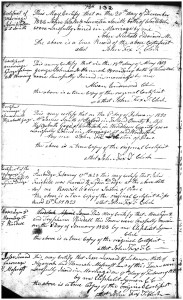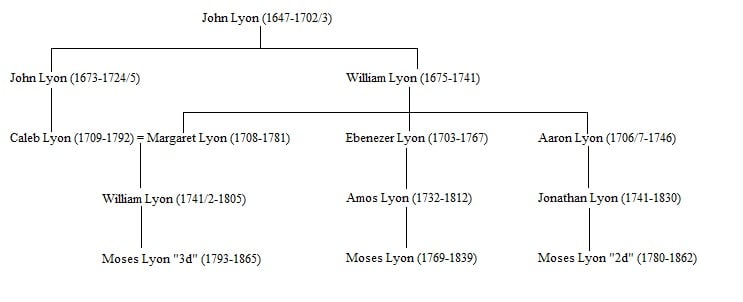In writing about the marital travails of my great-great-great-great-grandfather Moses Lyon (1793–1865), I was reminded of another topic that comes up frequently in consultations with NEHGS members: the use of suffixes such as Jr., 2nd, 3rd, etc. Today most people named Jr. are the child of someone with that name, and suffixes such as III , IV, or V usually denote a descent from an earlier ancestor with that name. It is often assumed that this was the practice in earlier times, which was not the case at all, even a century or more ago.
Usually the notation “Jr.” or “2nd” just meant that someone else with the same name lived in the same town and was older. That was really all there was to it. They could be father and son, uncle and nephew, first cousins, or not related at all. The suffix of the “3rd” meant that there were two older people in the town with the same name. In such cases, when the oldest person with that name died the “2nd” would drop the suffix and the “3rd” would now be called “2nd.”
In the case of my ancestor Moses Lyon of Woodstock, in the decade between his first marriage in 1823 (shown at left, second from the bottom of the page) and his third in 1833 he is always called “Moses Lyon 3d.” Among his direct Lyon ancestors, Moses is the first of this name. The other Moses Lyons in Woodstock were his second cousins – Moses Lyon (1769–1839) and Moses Lyon 2nd (1780–1862). As the chart shows below, my Moses was their second cousin through his paternal grandmother, and a third cousin through males only, as his paternal grandparents – Caleb Lyon and Margaret Lyon – were first cousins.
The first Moses Lyon died in 1839, and at this point my Moses Lyon becomes “Moses Lyon 2d” and the second Moses becomes simply “Moses Lyon.” The second Moses died in 1862 as “Moses Lyon,” as did my Moses in 1865, as all the other, older Moses Lyons had died by that point. Evaluating how a suffix is used during this period, whether in vital, land, or probate records, can yield important familial connections and help determine who else of that name is around (or not), once it’s understood how the suffix was generally used.
Share this:
About Christopher C. Child
Chris Child has worked for various departments at NEHGS since 1997 and became a full-time employee in July 2003. He has been a member of NEHGS since the age of eleven. He has written several articles in American Ancestors, The New England Historical and Genealogical Register, and The Mayflower Descendant. He is the co-editor of The Ancestry of Catherine Middleton (NEHGS, 2011), co-author of The Descendants of Judge John Lowell of Newburyport, Massachusetts (Newbury Street Press, 2011) and Ancestors and Descendants of George Rufus and Alice Nelson Pratt (Newbury Street Press, 2013), and author of The Nelson Family of Rowley, Massachusetts (Newbury Street Press, 2014). Chris holds a B.A. in history from Drew University in Madison, New Jersey.View all posts by Christopher C. Child →


